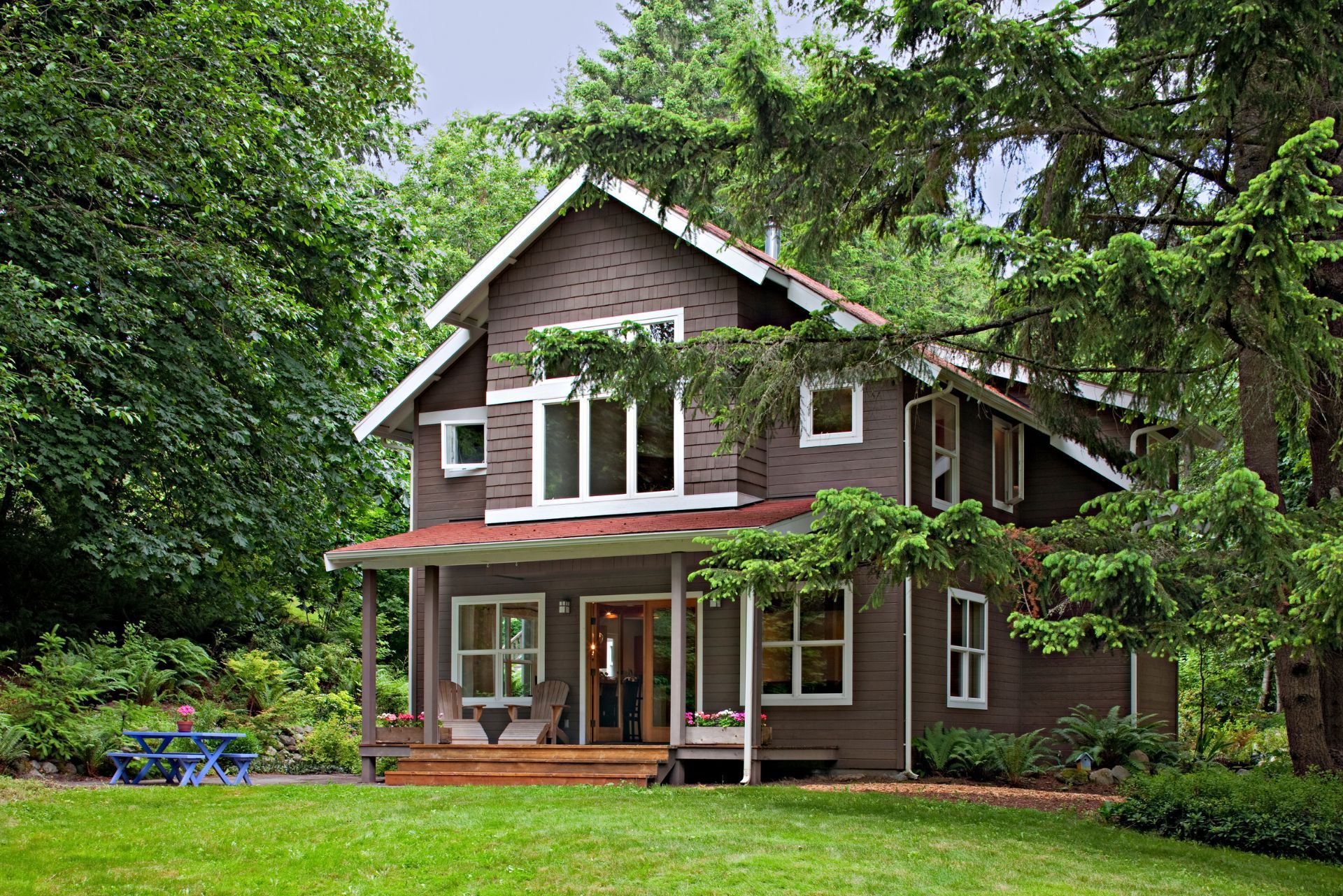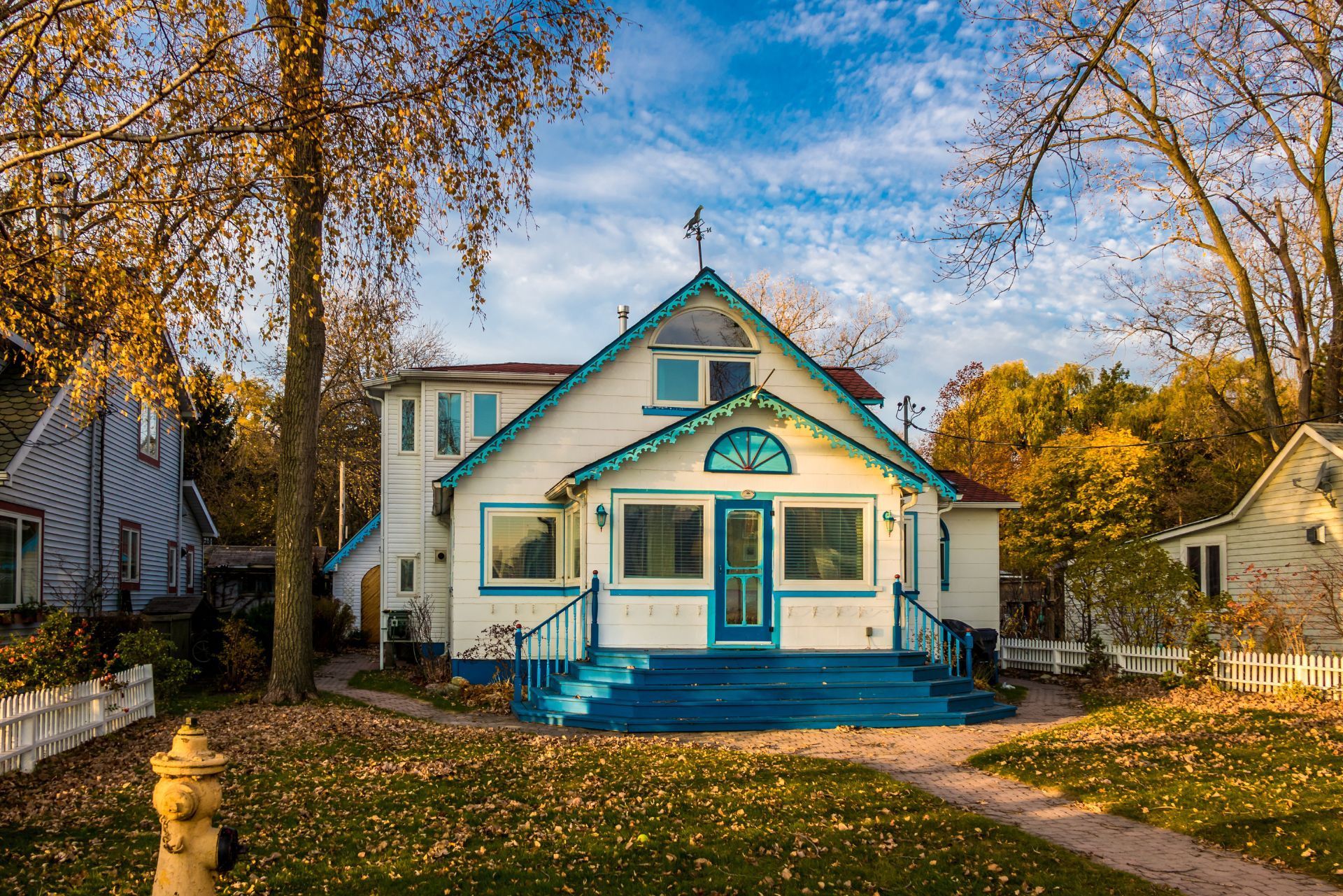Top 3 Recommended Policies

When it comes to protecting your home, having the right insurance coverage is essential. In Colorado, a state known for its stunning landscapes and unpredictable weather, understanding home insurance can be particularly important. This guide will provide an overview of Colorado home insurance, covering everything from the types of policies available to the factors that influence your premiums.
Understanding Home Insurance Basics
Home insurance is a contract between a homeowner and an insurance company that provides financial protection against various risks. This insurance typically covers the structure of the home, personal belongings, and liability for injuries that occur on the property. Home insurance is not just a safety net; it also offers peace of mind, allowing homeowners to focus on enjoying their living spaces without the constant worry of unforeseen disasters.
What Does Home Insurance Cover?
Home insurance policies generally include several key components:
- Dwelling Coverage: This protects the physical structure of your home from damage caused by events such as fire, theft, or vandalism. It’s essential to ensure that the coverage amount reflects the current rebuilding costs, which can fluctuate due to market conditions.
- Personal Property Coverage: This covers personal belongings, including furniture, electronics, and clothing, in case of theft or damage. Homeowners should take an inventory of their possessions to ensure they have adequate coverage, as many policies have limits on specific categories of items.
- Liability Protection: This provides coverage if someone is injured on your property and decides to sue. It can cover legal fees and settlements, making it a crucial component for homeowners who frequently host guests.
Additionally, many policies include coverage for additional living expenses (ALE), which helps pay for temporary housing if your home becomes uninhabitable due to a covered event. This aspect of home insurance can be a lifesaver during lengthy repairs, allowing families to maintain their quality of life even in challenging circumstances.
Types of Home Insurance Policies
In Colorado, homeowners can choose from several types of insurance policies:
- HO-1 (Basic Form): This is a limited policy that covers specific perils, such as fire and theft. While it may be more affordable, it leaves homeowners vulnerable to many other risks.
- HO-2 (Broad Form): This policy covers a wider range of perils, including those listed in HO-1, plus additional risks like falling objects and water damage. It’s a good option for those seeking a balance between cost and coverage.
- HO-3 (Special Form): The most common type of policy, HO-3 covers all perils except those specifically excluded, providing broad protection for homeowners. This policy is ideal for those looking for comprehensive coverage without the need to worry about numerous exclusions.
Understanding these types of policies can help homeowners select the right coverage for their needs. Moreover, it’s crucial to regularly review and update your policy, especially after significant life changes such as renovations, acquiring new valuables, or shifts in personal circumstances. This ensures that your coverage remains adequate and aligned with your current lifestyle and financial situation.

Factors Influencing Home Insurance Premiums
Several factors can affect the cost of home insurance premiums in Colorado. Understanding these factors can help homeowners make informed decisions about their coverage.
Location and Risk Assessment
The location of a home plays a significant role in determining insurance premiums. Areas prone to natural disasters, such as wildfires, floods, or hailstorms, may have higher rates. Additionally, the proximity to fire stations and emergency services can influence costs. For instance, homes situated in rural areas may face higher premiums due to longer response times from emergency services compared to urban settings. Furthermore, neighborhoods with a history of crime may also see increased rates as insurers factor in the risk of theft or vandalism.
Home Characteristics
The age, size, and condition of a home also impact insurance premiums. Older homes may require more maintenance and repairs, leading to higher costs. Features such as a swimming pool or a wood-burning stove can also increase premiums due to the associated risks. Moreover, the materials used in construction can play a crucial role; homes built with fire-resistant materials may qualify for discounts, while those with outdated electrical systems or plumbing may face higher premiums due to the increased likelihood of claims. The overall square footage and the number of stories can also affect the cost, as larger homes typically have more contents to insure and may be more challenging to repair in the event of damage.
Credit Score and Claims History
Insurance companies often consider a homeowner's credit score when calculating premiums. A higher credit score can lead to lower rates, as it indicates responsible financial behavior. Additionally, a history of frequent claims can result in higher premiums, as insurers may view the homeowner as a higher risk. It's also worth noting that some insurers may offer discounts for policyholders who have not filed any claims for a certain period, rewarding them for maintaining their property and minimizing risks. Homeowners can improve their credit scores by paying bills on time and reducing debt, which can ultimately lead to more favorable insurance rates over time.
Natural Disasters and Coverage Considerations
Colorado's diverse climate means that homeowners must be aware of specific risks associated with natural disasters. Understanding these risks can help in selecting appropriate coverage.
Wildfires
Wildfires are a significant concern in Colorado, particularly in rural and mountainous areas. Homeowners in these regions should consider additional coverage options, such as wildfire insurance, to protect against potential losses. The risk of wildfires has been exacerbated by climate change, leading to longer fire seasons and more intense fires. It's crucial for homeowners to not only assess their insurance needs but also to implement fire mitigation strategies, such as creating defensible space around their properties and using fire-resistant building materials. Engaging with local fire departments for community resources and education can also be beneficial in reducing risks.
Floods
While Colorado is not typically known for flooding, certain areas are susceptible to flash floods, especially during heavy rain or snowmelt. Standard home insurance policies usually do not cover flood damage, so homeowners may need to purchase separate flood insurance through the National Flood Insurance Program (NFIP). Additionally, homeowners should familiarize themselves with local flood zones and historical data on flooding events. Installing sump pumps, maintaining gutters, and ensuring proper drainage around the property can further safeguard against potential flooding. Awareness of emergency plans and evacuation routes is also vital, as flash floods can occur with little warning.
Hail Damage
Hailstorms are common in Colorado, and they can cause significant damage to roofs and siding. Homeowners should ensure their policies include coverage for hail damage, as this can be a costly repair if not covered. It's important to regularly inspect roofs and siding for signs of wear and tear, as well as to keep abreast of weather forecasts during storm seasons. Many homeowners opt for impact-resistant roofing materials that can withstand hail better than traditional options. Additionally, documenting any damage with photographs can be invaluable when filing claims, ensuring that homeowners receive the compensation they need to restore their homes effectively.
Choosing the Right Home Insurance Provider
Finding the right home insurance provider is crucial for ensuring adequate coverage and support when needed. Here are some tips for selecting a provider in Colorado.
Research and Compare Providers
Start by researching different insurance companies and comparing their policies, coverage options, and premiums. Online comparison tools can help streamline this process, allowing homeowners to evaluate multiple options quickly. Additionally, consider looking into the financial stability of the companies you are interested in. Organizations like A.M. Best and Standard & Poor's provide ratings that can give you an idea of an insurer's ability to pay claims, which is a vital aspect of choosing a reliable provider.
Read Customer Reviews
Customer reviews can provide insight into an insurance company's reputation and customer service. Look for feedback on claims processing, responsiveness, and overall satisfaction. This information can help in making an informed decision. It’s also beneficial to check for patterns in reviews; for instance, if multiple customers mention difficulties with claims, it might be a red flag. Engaging in local community forums or social media groups can also yield valuable firsthand experiences from fellow homeowners in your area.
Consult with an Insurance Agent
Working with an experienced insurance agent can be beneficial. Agents can provide personalized recommendations based on individual needs and help navigate the complexities of home insurance policies. They often have insights into local market trends and can suggest coverage options that may not be immediately apparent. Moreover, a good agent can assist you in understanding the fine print of your policy, ensuring that you are aware of any exclusions or limitations that could affect your coverage in the event of a claim.
Understand Your Coverage Needs
Before finalizing your choice, it’s essential to assess your specific coverage needs. Factors such as the age of your home, its location, and any valuable items you own can influence the type of coverage you require. For instance, if you live in an area prone to natural disasters, you may need additional coverage for flood or earthquake damage. Additionally, consider whether you want replacement cost coverage, which pays to replace damaged property at current market rates, or actual cash value coverage, which factors in depreciation. Understanding these nuances can help you select a policy that truly meets your needs.
Evaluate Discounts and Bundling Options
Many insurance providers offer various discounts that can significantly reduce your premium costs. These may include discounts for installing security systems, being claims-free, or bundling your home insurance with auto or life insurance policies. Take the time to inquire about all available discounts and calculate how they can affect your overall costs. Bundling policies not only saves money but can also simplify your insurance management by consolidating your coverage under one provider, making it easier to keep track of payments and renewals.

Discounts and Savings on Home Insurance
Homeowners in Colorado may be eligible for various discounts that can help reduce insurance premiums. Understanding these options can lead to significant savings. It's essential for homeowners to review their policies regularly and inquire about any potential discounts that might apply to their unique situations, as these can change over time and vary by insurer.
Bundling Policies
Many insurance companies offer discounts for bundling home and auto insurance policies. By purchasing multiple policies from the same provider, homeowners can often save money on their premiums. Additionally, bundling not only simplifies the management of insurance policies by having a single point of contact but can also enhance coverage options, as some insurers provide exclusive benefits to bundled customers, such as increased liability coverage or added personal property protection.
Safety Features
Installing safety features in a home, such as security systems, smoke detectors, and fire alarms, can lead to discounts on insurance premiums. Insurers often reward homeowners who take proactive measures to protect their property. Furthermore, advanced safety features like smart home technology, which allows homeowners to monitor their property remotely, can further enhance security and potentially lead to even greater discounts. Homeowners should keep receipts and documentation of these installations, as they may need to provide proof to their insurance provider to qualify for the discounts.
Claims-Free Discounts
Some insurance companies offer discounts for homeowners who maintain a claims-free history. This encourages responsible ownership and can lead to lower premiums over time. In addition to the financial benefits, having a claims-free record can also reflect positively on a homeowner's overall risk assessment, potentially opening doors to additional savings or better coverage options in the future. Homeowners should be aware that even minor claims can impact their claims history, so it’s wise to weigh the costs of small repairs against the potential increase in premiums when considering filing a claim.
The Claims Process: What to Expect
Understanding the claims process is essential for homeowners. Knowing what to expect can help alleviate stress during a challenging time.
Reporting a Claim
When a covered event occurs, the first step is to report the claim to the insurance company. This can often be done online or over the phone. Homeowners should provide detailed information about the incident, including photographs and any relevant documentation. It’s also advisable to take notes during the call or while filling out online forms, as this can help clarify any questions or concerns that may arise later in the process. Being thorough in this initial step can set the tone for a smoother claims experience.
Claims Assessment
After a claim is reported, an insurance adjuster will typically be assigned to assess the damage. The adjuster will evaluate the situation and determine the amount of compensation the homeowner is eligible to receive based on the policy terms. During this assessment, homeowners may be asked to provide additional information or access to the property for a more in-depth evaluation. It’s important to be cooperative and transparent, as this can expedite the process. Additionally, homeowners should consider documenting their own observations and any repairs that may have already been initiated to prevent further damage.
Receiving Compensation
Once the assessment is complete, the insurance company will issue a payment to the homeowner for the covered damages. It is essential to keep records of all communications and documentation related to the claim for future reference. Homeowners should also be aware that the compensation amount may not always cover the full extent of the damages, depending on policy limits and deductibles. Understanding the specifics of one’s insurance policy can help manage expectations and prepare for any potential out-of-pocket expenses. Furthermore, if there are disagreements regarding the compensation amount, homeowners have the right to appeal the decision, which may involve further negotiations or additional assessments.
Common Home Insurance Myths
There are several misconceptions surrounding home insurance that can lead to confusion. Debunking these myths can help homeowners make informed decisions.
Myth 1: Home Insurance Covers Everything
Many homeowners believe that their insurance covers all types of damage. However, most policies have exclusions, such as damage from floods or earthquakes. It is crucial to understand what is and isn't covered under a specific policy.
Myth 2: The Insurance Company Always Pays the Full Amount
Another common myth is that insurance companies will always pay the full amount of a claim. In reality, the payout is subject to the policy limits, deductibles, and the specific terms of the policy. Homeowners should review their policies carefully to understand their coverage.
Myth 3: Home Insurance is Only for Homeowners
Renters often believe that home insurance is only for homeowners. However, renters insurance is available and provides similar protections for personal belongings and liability, making it essential for anyone renting a home.
Conclusion: Protecting Your Colorado Home
Home insurance is a vital aspect of homeownership in Colorado. Understanding the various types of coverage, factors influencing premiums, and the claims process can help homeowners make informed decisions. By selecting the right policy and provider, homeowners can ensure their property is adequately protected against potential risks.
As the landscape of Colorado continues to change, staying informed about home insurance options and risks is essential. Whether it's protecting against wildfires, hail damage, or other natural disasters, having the right coverage can provide peace of mind and financial security.
Contact Us
Phone
Location

